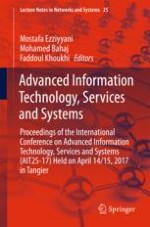This book includes the proceedings of the International Conference on Advanced Information Technology, Services and Systems (AIT2S-17) held on April 14–15, 2017 in Tangier, Morocco. Presenting the latest research in the field, it stimulates debate, discusses new challenges and provides insights into the field in order to promote closer interaction and interdisciplinary collaboration between researchers and practitioners.
Intended for researchers and practitioners in advanced information technology/management and networking, the book is also of interest to those in emergent fields such as data science and analytics, big data, Internet of Things, smart networked systems, artificial intelligence and expert systems, pattern recognition, and cloud computing.
